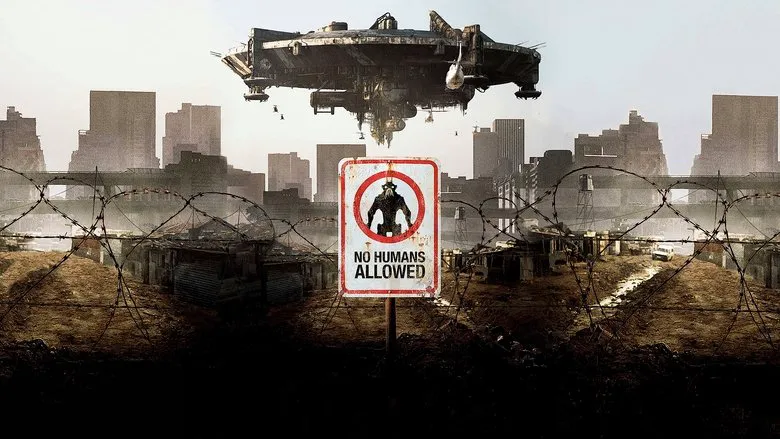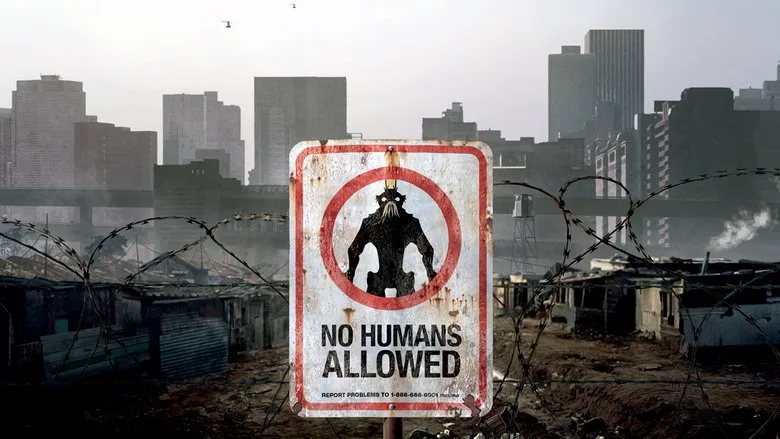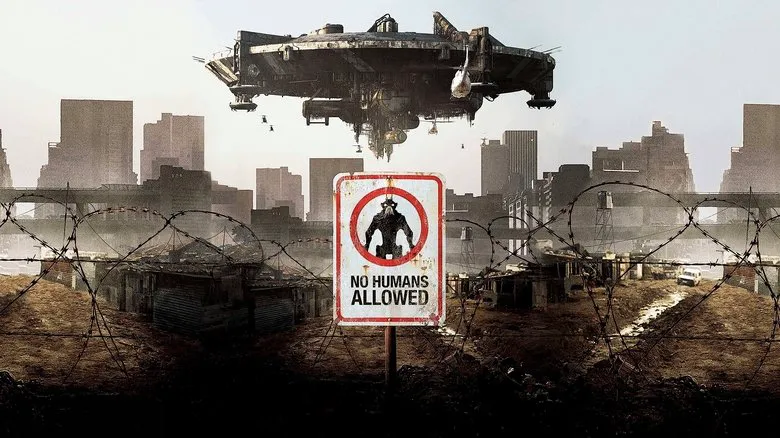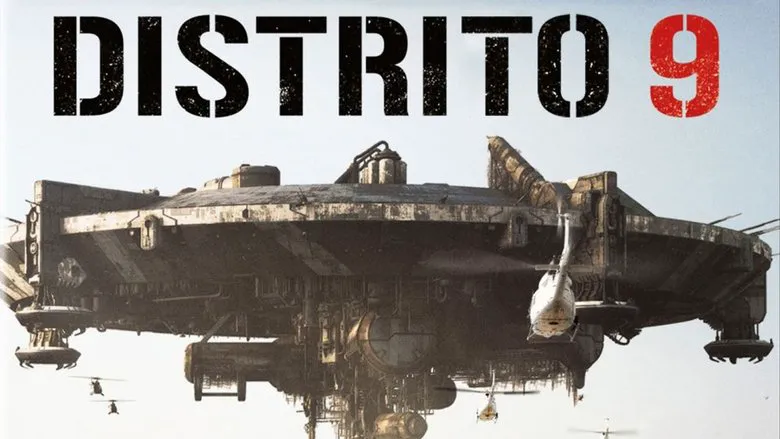District 9: A Fresh Take on Alien Contact
“District 9” emerges as an independent science fiction film, offering a novel perspective on the theme of contact with extraterrestrial intelligence. The movie centers around insect-like aliens stranded in a refugee camp, presenting a gritty and thought-provoking narrative.

Above Johannesburg, a South African metropolis grappling with the legacy of apartheid and known locally as Joburg, a massive UFO hovers, its emergency lights flashing. Resembling a colossal oil refinery, the alien vessel is teeming with extraterrestrial “guest workers”—agile, unsettling creatures that appear to be a bizarre hybrid of rugby players in prawn costumes and zombie scarabs. These distressed aliens have been confined to a camp for displaced persons, “District 9.” After two decades of uneasy coexistence with humans of all races, the area has devolved into a chaotic mix of a sprawling market, the Gaza Strip, and a restricted zone controlled by the Nigerian mafia.

A Tangled Web of Interests
The film’s plot unfolds in line with these comparisons. On one side, government authorities are eager to relocate all aliens to “District 10,” a more restrictive, barbed-wire-enclosed camp. On another side, human rights activists have logically shifted their focus from human rights to the rights of these insect-like beings. Then there are the intelligence agencies, who have stumbled upon a treasure trove of alien technology, but are unable to utilize it because the powerful devices stubbornly refuse to function in human hands. Caught in the middle of these conflicting interests is the protagonist, a government official responsible for the mass eviction of the aliens, who begins to mutate into one of them after being exposed to a mysterious substance the aliens have been collecting for two decades in their junkyard, hoping to use it to power their UFO and return home.

A Much-Needed Reboot
One of the most significant achievements of “District 9” is its refreshing take on the well-worn trope of humanity’s contact with extraterrestrial intelligence. For the past three decades, such encounters have typically followed either the “benevolent” Spielbergian model of “Close Encounters of the Third Kind” or the “malevolent” approach of the “Alien” franchise. Neill Blomkamp dares to present it as a grueling, fruitless, and ultimately disappointing endeavor for both sides. Another merit of Blomkamp’s film is its portrayal of historical justice. The unpleasant alien refugees, who have triggered a new humanitarian crisis in South Africa, are reminiscent of the insects crushed underfoot in Verhoeven’s “Starship Troopers.”

A Blend of Styles
However, other aspects of this debut film are less impressive. Unlike “Cloverfield” (2008), which maintained a consistent found-footage style from beginning to end, “District 9” blends pseudo-documentary footage with clearly staged scenes, making it difficult to fully immerse oneself in the extraordinary events unfolding on screen. This is a crucial element for low-budget science fiction films, where independent directors are working with relatively small budgets (in this case, a modest thirty million dollars). Peter Jackson, who produced “District 9” with his own funds, successfully created a sense of immersion in his science fiction debut, “Bad Taste,” where an alien’s brain spills out of its head, and he nonchalantly pushes it back in. The reason why it’s difficult to empathize with a bureaucrat who grows a claw instead of a hand is quite clear.
Ultimately, the issues raised by “District 9” are more relevant to the reality we inhabit than to the realm of science fiction.